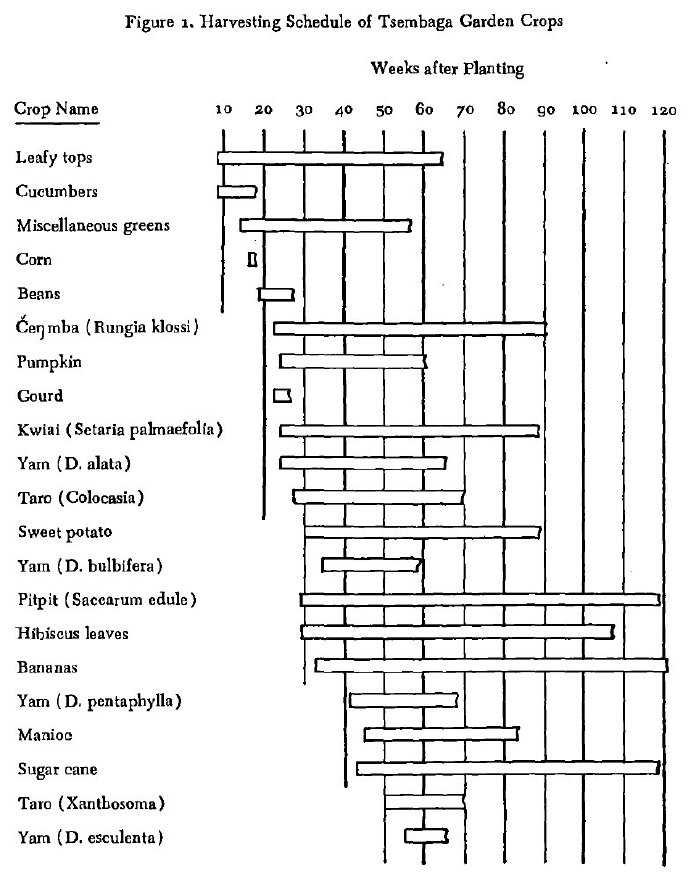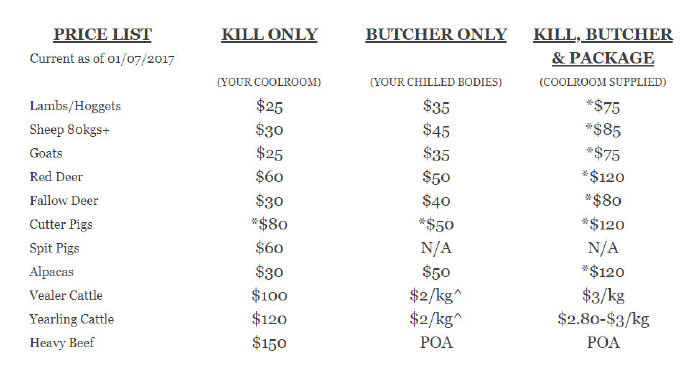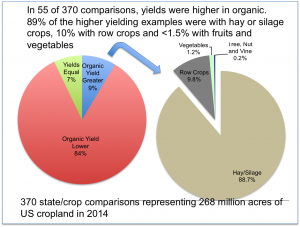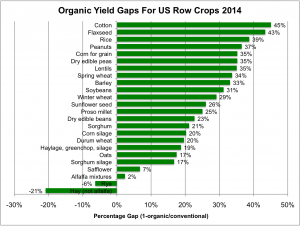【2022-11-10】
@何不笑 看到一篇论文,说稻作区的人比种小麦地区的人幸福感差,不开心。[挖鼻]
原因是,种稻子的地区,因为稻作是卡伦所说的“软件导向”农业,因而需要更多的协作和水利共享,所以稻农社会的社交依赖性更强,产生了广泛的攀比心理,攀比让人幸福感下降;而种小麦的地方这种需求就比较弱,更个人主义一些,社交需求和攀比心理也就更弱。 (doi.org/10.1037/pspa0000324 )
@whigzh(more...)
【2022-11-10】
@何不笑 看到一篇论文,说稻作区的人比种小麦地区的人幸福感差,不开心。[挖鼻]
原因是,种稻子的地区,因为稻作是卡伦所说的“软件导向”农业,因而需要更多的协作和水利共享,所以稻农社会的社交依赖性更强,产生了广泛的攀比心理,攀比让人幸福感下降;而种小麦的地方这种需求就比较弱,更个人主义一些,社交需求和攀比心理也就更弱。 (doi.org/10.1037/pspa0000324 )
@whigzh(more...)
【2021-03-23】
读了篇前牧场主写的文章,不错,
其中讲到北美肉牛养殖业的分工,大致四个环节:
1)breeding ranch,育种牧场,按需提供各种特性的种牛,他们维护着一套有关每头种牛遗传特性的数据库,供顾客挑选,
2)cow-calf ranch,这种牧场维持一群育龄母牛,每年夏天从育种牧场补充一些公牛,配种,次年春天生下牛犊后,养到秋天断奶,此时体重约500-600磅,卖给下家,
3)下家叫stocker ranch,他们的工作最简单,买来断(more...)
【2021-03-17】
在读Ben Wilson的《黄金时代》,这本书其实很不错,可惜,和很多人一样,Wilson也人云亦云的重复着许多广为流行的俗套谬论,
比如棉花与奴隶制的关系问题,认为内战前米国南方棉花种植业的竞争力完全来自奴隶劳动的低成本,这个说法确实很流行,包括当时的很多米国人也这么相信,可是在最近几十年中,它基本上只流行于外行之中,经济史家早已抛弃这种念头,因为数据太明确了,内战废奴之后,米国棉花业只经历了十来年的短期震荡,70年代已恢复到战前水平,而且一直保持增长势头,而且不仅是产量绝对值的增长,市场占有率也在增长,其市场主导(more...)
【2021-01-23】
历史学家为了从有限史料中榨出一点点信息真是绞尽脑汁,前现代英格兰保存最完整的史料是洗礼、婚姻和遗嘱记录,所以各路史家都拼命从中淘数据,Kussmaul 注意到,以谷物耕种为主的地区,结婚高峰在收获后的八月,而以畜牧为主的地区,结婚高峰在春季产仔高峰之后,基于这一特征,他发现,17世纪英格兰农业的地区专业化程度明显高于16世纪,非常聪明的方法(引文摘自:Mark Overton: Agricultural Revolution in England, p.103)
【2021-01-13】
我在《食物与人类#5:文明试金石》 里解释了热带园艺作物和谷物的区别,以及这一区别的文化后果,下面这张图是很好的注脚,图中列出了新几内亚Tsembaga人各种园艺作物的收获进度,可以看出,绝大多数作物的收获期都长达几十个星期,最长的90个星期(意味着绝大部分食物库存都以未收获形式存在于园地中),其中玉米最短,而玉米恰是其中唯一的谷物,是不久前才引进的(摘自 Roy A. Rappaport: Pigs for the Ancestors, p.48)

【2020-02-12】
@whigzhou: 对酒的嗜好貌似在农耕社会经历了很高强度的负选择压力,好像所有狩猎采集群体和畜牧群体都比农耕者更爱酗酒,我还没见过例外,对于狩猎采集者,这一点或许还可归因于延迟满足能力较差,但这个解释很难适用于畜牧者。
@Fahahahhh:但是酿酒和农业发展是分不开的吧,没准是因为农耕社会酒更容易获得,太爱喝的都喝死了。
@whigzhou: 当然分得开,蜂蜜和水果这两种常见采集物都是酿(more...)
【2019-07-05】
最近了解到一门很特别的生意,是这样,我一位本地朋友,拥有两个小农场,一个40英亩,也是他的居家所在,另一个18英亩,上面养着一小群大羊驼,我知道他的职业是木匠兼锁匠,所以就好奇的问他有没有养过别的牲口,他说牛羊猪都养过,但不多,我又问,是自己杀了吃还是卖掉,他说自己吃,但不是自己杀,需要吃的时候会请人来杀,这里有一种专业服务,叫mobile butchery,专门上门替农场主屠宰牲口,特别是那些自家没有屠宰设施的小农场(我猜其中可能也涉及到管制)。
有意思的是宰杀方式,屠夫会在开阔空间(而不是栏圈中)用步枪射杀正在漫游的牲口,一般枪法很好,务求一枪放倒,据说这样肉质会更好,因为没有恐慌和挣扎所造成的肌肉紧张,杀死后,屠夫会将尸体剥皮去内脏后挂在车里带走,然后在冷库里冻上,若干天后分部位切好包好送回来,另一个有趣之处是,游动屠夫不仅可以帮你宰杀你养的牲口,如果你农场上有野兽(比如鹿、袋鼠或野骆驼)的话,他也可以替你杀,只是收费会更高。
刚刚我搜了一番,发现这生意好像还挺兴隆的,这里是新南威尔士的一家(图中是他家的价目表):

食物与人类#7:农业的诅咒
辉格
2018年7月27日
上一篇我讲到,自旧石器晚期以来,人口增长,技术进步,游动性降低,这三个轮番相互强化的因素,推动人类食谱沿质量光谱向下移动,这一过程在冰期过后气温回暖之际骤然加速,而在整个农业时代,更以前所未有的速度推进,而且随着土地开垦和作物单一化,渔猎和畜牧成分萎缩,食谱在下移之后进而向下收窄,对谷物的依赖日益强化。
只有在某些大瘟疫过后的恢复期中,食谱质量才有所反弹,然后到哥伦布大交换(伴随着有记录以来最大规模瘟疫)之后在新世界大幅反弹,最后,直到工业革命和人口转型之后,才在中等以上收入地区出现全面反弹。
食谱下移和向下收窄对人类健康与生活质量造成了许多负面影响,所以不乏有人将导致定居农业的新石器革命视为人类遭受的一次诅咒,从饮食与健康角度看,确实如此,对于那些缺乏畜牧和渔猎成分的纯谷物种植群体,这一点尤为真确。
从进化角度看,谷物是特别可疑的一类食物,因为我们的旧石器祖先从未将它们当作重要食物来源,这意味着,如果它们有什么害处,我们的生理系统作出适应性改变的机会极为有限,因为留给进化适应的时间只有几千最多一万年,而事实上,谷物成为主食对健康所带来的损害在考古记录中得到了清晰展示。
龋齿
龋齿是特别典型的农业病,狩猎采集者中很少见;高碳水饮食为细菌创造了良好的口腔环境,典型采猎者的食谱中,碳水化合物贡献的能量只有1/3,高纬度地区更低,而在密集农耕者中则高达2/3到4/5,而且农耕者对淀粉类食物的加工与烹饪更充分,甚至精制成饴(即麦芽糖,一种双糖),因而更容易被口腔细菌所利用,而采猎者能吃到的唯一“精制糖”是蜂蜜,可是蜂蜜本身含有抗菌成分。
【这里我想顺便强调一下,我的读者中大概绝大多数和我一样来自蒙古或高加索人种,这两个人种在更新世末期都曾长期生活在接近冰川线或冻原的寒冷地带,所以出于一种自我中心主义的习惯,当我在『最近三四万年』这一时间情境下使用『我们祖先』这个短语时,更多考虑的是他们,而对于他们,食谱中脂肪含量会比典型现代采猎者高得多,碳水则低得多。】
所以考古记录中向谷物的转变总是与龋齿高发联系在(more...)
【2018-03-10】
@whigzhou: A)食物获取技术进步->提高单位面积土地的食物获取量->降低游动性,B)交通技术进步->扩大当天往返距离;A+B->提升每天返回单一营地的可行性->达到某个临界点:定居->提升对土地作长期投资的激励->提升延迟满足禀赋->加深对环境的改造->作物驯化->固定资产形成->goto A和B->进入正反馈循环……定居农业起源的大致脉络,所有元素他们都注意到了,但(more...)
The Lower Productivity Of Organic Farming: A New Analysis And Its Big Implications
有机农业生产率更低:一项新的分析及其重大含义
作者:Steven Savage @ 2015-10-9
译者:沈沉(@你在何地-sxy)
校对:babyface_claire
来源:Forbes,http://www.forbes.com/sites/stevensavage/2015/10/09/the-organic-farming-yield-gap/
The productivity of organic farming is typically lower than that of comparable “conventional” farms. This difference is sometimes debated, but a recent USDA survey of organic agriculture demonstrates that commercial organic in the U.S. has a significant yield gap.
有机农业的生产率通常低于可比的“传统”农业。其中差异时有争论,不过美国农业部最近关于有机农业的一项调查证实,美国的商业有机作物存在一个巨大的产量差距。
I compared 2014 survey data from organic growers with overall agricultural yield statistics for that year on a crop by crop, state by state basis. The picture that emerges is clear – organic yields are mostly lower. To have raised all U.S. crops as organic in 2014 would have required farming of one hundred nine million more acres of land. That is an area equivalent to all the parkland and wildland areas in the lower 48 states or 1.8 times as much as all the urban land in the nation.
我将采自有机作物种植者的2014年调查数据与农业总产量统计数据分作物、分州别进行了对比,得出的画面非常清晰——有机作物的产量一般都更低。如果2014年全美农作物都是有机种植,那么需要耕种的土地将比实际多出1.09亿英亩。这一面积相当于本土48州所有绿地和荒地的总和,或全国所有城市用地之和的1.8倍。
As of 2014 the reported acreage of organic cropland only represented 0.44% of the total, but if organic were to expand significantly, its lower land-use-efficiency would become problematic. This is one of several reasons to question the assertion that organic farming is better for the environment.
到2014年,公开的有机农用地面积只占全部农地的0.44%,但如果有机种植大幅扩张,它那较低的用地效率将很棘手。有人断言有机农业对环境更有利,这里提到的只是质疑理由之一。
The USDA conducted a detailed survey of organics in 2008 and then again in 2014. Information is collected about the number of farms, the acres of crops harvested, the production from those acres, and the value of what is sold. The USDA also collects similar data every year for agriculture in general and makes it very accessible via Quick Stats.
美国农业部2008年对有机作物进行了一次详细调查,2014年又做了一次。采集的信息包括农场数量、作物收获面积、产量和卖出总价。美国农业部每年还针对全部农业采集类似数据,并在Quick Stats上公开发布。
It i(more...)

【2014年有机与传统农业统计数据比较概要】
For 292 of those comparisons, the organic yields were lower (84% on an area basis). There were 55 comparisons where organic yield was higher, but 89% of the higher yielding organic examples involved hay and silage crops rather than food crops. The organic yield gap is predominant for row crops, fruit crops and vegetables as can be seen in the graphs below. 在其中292个比较结果中,有机作物产量都要更低(以面积而言占到84%)。有机作物产量更高的,有55组比较结果。但这些产量更高的案例中有89%种的是干草和青贮饲料作物,而非食用作物。以下图表显示:有机作物产量差距在中耕作物、水果作物和蔬菜中非常突出。 The reasons for the gap vary with crop and geography. In some cases the issue is the ability to meet periods of peak nutrient demand using only organic sources. The issue can be competition from weeds because herbicides are generally lacking for organic. In some cases its reflects higher yield loss to diseases and insects. Although organic farmers definitely use pesticides, the restriction to natural options can leave crops vulnerable to damage. 出现差距的原因随作物和地理不同而有所不同。在某些情形中,问题出在只用有机资源来满足营养需求高峰的能力上。问题也可能出在杂草竞争,因为有机作物中一般不用除草剂。在某些情形中,它反映的是因病害和虫害导致的减产。尽管种植有机作物的农场主绝对也会用杀虫剂,但是对天然产品的限制要求仍会让作物更易受到伤害。 I’ve posted a much more detailed summary of this information on SCRIBD with the data at the state level. 有关上述信息,我已在SCRIBD上贴了一份更加详细的摘要,用的是州级层面的数据。
【大量主要中耕作物采用有机种植时产量大幅降低】
【有机水果和坚果的产量绝大多数都大幅低于传统种植】

【蔬菜作物中的产量差距存在巨大差异】
There is some potential for artifacts within this data set. If the proportion of irrigated and non-irrigated land differs between organic and conventional that would skew the data. With lettuce and spinach it is likely that the organic is proportionally more in the “baby” category making yields appear dramatically lower. 这组数据中可能存在一些人为现象。如果在有机种植和传统种植中,灌溉地和非灌溉地的比例不同,那么数据就有所扭曲。生菜和菠菜的有机种植可能很大程度上仍属于“婴儿”类,故而产出差距看起来十分大。 But overall this window on farming is useful for understanding the current state of commercial organic production. Since the supply of prime farmland is finite, and water is in short supply in places like California, resource-use-efficiency is an issue even at the current scale of organic (1.5 million cropland acres, 3.6 million including pasture and rangeland). 但总体来说,这一农业信息窗口很有用,能让我们了解商业有机作物生产的现状。由于优质农田的供给是有限的,而在加州等地,水也存在供给短缺,因此,即便是以有机作物当前的种植面积(150万英亩耕地,包括草地和牧场则为360万亩)来说,资源利用效率也是个大问题。 You are welcome to comment here and/or to email me at [email protected]. I’d be happy to share a data file with interested parties and to get feedback about where particular yield comparisons might be misleading. A more detailed presentation is available at https://www.scribd.com/doc/283996769/The-Yield-Gap-For-Organic-Farming 欢迎提出评论或发送邮件至[email protected]。我愿意和感兴趣者分享数据文件,如果哪个具体的产量比较可能具有误导性,我也希望得到反馈。更详细的介绍请见:https://www.scribd.com/doc/283996769/The-Yield-Gap-For-Organic-Farming (编辑:辉格@whigzhou) *注:本译文未经原作者授权,本站对原文不持有也不主张任何权利,如果你恰好对原文拥有权益并希望我们移除相关内容,请私信联系,我们会立即作出响应。——海德沙龙·翻译组,致力于将英文世界的好文章搬进中文世界——
A $60 million pork kickback?
一份6千万美金的猪肉回扣?
作者:Danny Vinik @ 2015-8
译者:陆嘉宾(@晚上不买白天买不到)
校对:沈沉(@你在何地-sxy)
来源:Politico,http://www.politico.com/agenda/story/2015/08/a-60-million-pork-kickback-000210
Unhappy small farmers detect a racket in a pork branding deal—and the USDA signed off on it.
不幸的小农户们从一桩猪肉品牌服务交易中发现了诈骗行为,并且美国农业部还在这上面签了字。
Pork hasn’t been “the other white meat” for years—after a 24-year run as the centerpiece of billboards and the butt of jokes, the slogan was retired in 2011 and replaced with “Pork: Be Inspired,” a logo you might have seen on the apron of Ted Cruz as he grilled pork chops at the Iowa State fair last week.
猪肉已经很多年没有被称作“另一种白肉”【校注:1986年,鉴于当时消费者普遍接受了红肉不利健康(more...)
——海德沙龙·翻译组,致力于将英文世界的好文章搬进中文世界——
【2015-12-05】
@朱世巍 日本政府将采取强力措施促进农地集约化经营:对放弃耕种的土地增税;对长期出租的土地减税
@朱世巍:日本所面临的最艰巨问题,1是宪法,2个人口,3是农业。安倍似乎是真心要解决这三大难题——果然不是一个混日子的首相
@李佳苏勒Iridium: 咱大大战后第一相打底儿,千古一相封顶。看能做到哪儿。
@熊也餐厅: 不搞凯恩斯主义更好我得写信提醒他老一下。
@whigzhou: 这条政策比他的凯恩斯主义更蠢~
@whigzhou: 安倍就是个强国家主义者,只不过恰(more...)
The Colossal Hoax Of Organic Agriculture
有机农业的惊天骗局
作者:Henry I. Miller, Drew L. Kershen @ 2015-7-29
译者:小聂
校对:林翠 陈小乖(@lion_kittyyyyy)
来源:Forbes,http://www.forbes.com/sites/henrymiller/2015/07/29/why-organic-agriculture-is-a-colossal-hoax/
Consumers of organic foods are getting both more and less than they bargained for. On both counts, it’s not good.
对有机食品的消费者来说,现实既多于期望,也少于期望。两样都不是好事。
Many people who pay the huge premium—often more than a hundred percent–for organic foods do so because they’re afraid of pesticides. If that’s their rationale, they misunderstand the nuances of organic agriculture.
许多人愿意为有机食品支付高额溢价——有时甚至超出原价一倍,是因为他们害怕农药残留。如果这真是基于他们的理性选择,说明他们有机农业的某些细节存在误解。
Although it’s true that synthetic chemical pesticides are generally prohibited, there is a lengthy list of exceptions listed in the Organic Foods Production Act, while most “natural” ones are permitted.
虽然化学合成农药确实通常被禁止用于有机食品生产,但是《有机食品生产法》(Organic Food Production Act)中却有一份长长的例外清单,同时,大部分“天然”农药也被允许使用。
However, “organic” pesticides can be toxic. As evolutionary biologist Christie Wilcox explained in 标签:
Organic certification is process-based. That is, certifying agents attest to the ability of organic operations to follow a set of production standards and practices which meet the requirements of the Organic Foods Production Act of 1990 and the [National Organic Program] regulations . . . If all aspects of the organic production or handling process were followed correctly, then the presence of detectable residue from a genetically modified organism alone does not constitute a violation of this regulation. [emphasis added] 有机认证是基于过程的认证。就是说,认证机构负责认定有机产品的生产操作是否符合1990年《有机食品生产法》以及[国家有机计划]等监管机构所要求的生产标准及操作规范。如果有机生产及处理的过程完全合规,那么仅凭转基因成分残留并不构成违规。【粗体由本文作者所加】Putting it another way, so long as an organic farmer abides by his organic system (production) plan–a plan that an organic certifying agent must approve before granting the farmer organic status–the unintentional presence of GMOs (or, for that matter, prohibited synthetic pesticides) in any amount does not affect the organic status of the farmer’s products or farm. 换句话说,只要生产有机作物的农民遵守自己制定的有机体系(生产)计划(这一有机生产计划必须先得到有机认证机构的批准,农民才会被授予有机生产许可),无论有多少非有意掺入的转基因成分(或者是违禁化学合成农药)都不会影响产品或者农场的有机认证。 Under only two circumstances does USDA sanction the testing of organic products for prohibited residues (such as pesticides, synthetic fertilizers or antibiotics) or excluded substances (e.g., genetically engineered organisms). First, USDA’s National Organic Production Standards support the testing of products if an organic-certifying agent believes that the farmer is intentionally using prohibited substances or practices. And second, USDA requires that certifying agents test five percent of their certified operations each year. The certifying agents themselves determine which operations will be subjected to testing. 只有在两种情况下,美国农业部才会允许对有机产品做违禁成分残余(例如农药,合成化肥,或抗生素)或是例外成分(例如转基因作物)的测试。美国农业部国家有机生产标准支持对产品进行检测的第一种情况是,认证机构认为农民有意使用违禁品或是采取违禁操作。第二种情况是,美国农业部要求,认证机构每年对其所认证的生产计划的5%进行抽检。认证机构自行决定抽检对象。 The organic community, including the International Federation of Organic Agricultural Movements (IFOAM), supports the USDA’s lenient testing protocols and opposes more frequent mandatory testing of organic products for prohibited and excluded substances. 包括国际有机农业运动联盟(IFOAM)在内的有机食品界支持美国农业部的宽松检测协定,并反对对产品中违禁和例外成分做更频繁的强制检测。 The organic community and USDA offer two explanations for such minimal testing. First, they emphasize that organic farming is process-based, not product-based, meaning that what counts for organic certification are the approved organic system (production) plan and the farmer’s intention to comply with that plan as reflected through record-keeping obligations. 有机食品界以及美国农业部对这样小范围的产品检测,给出了两点解释。第一,他们强调有机农业是过程认证,而非产品认证。即对于有机认证来说,最重要的是得到认证的有机体系(生产)计划,和从保存生产记录的责任中所反映出的农民对于遵守该计划的意愿。 Second, widespread testing would impose substantial costs on organic farmers, thereby increasing production costs beyond the already greater expenses that organic farmers incur. Organic farmers offset these higher productions costs by earning large premiums for organic products, but there is always a price point beyond which consumers will shift to cheaper non-organic. 第二,广泛的检测会显著增加生产有机产品的农民的成本,使本已承受高额支出的有机作物农民的生产成本变得更高。从事有机生产的农民会以提高有机产品溢价的方式转移高生产成本,但当价格高到一定程度时,消费者便会转向更便宜的非有机产品。 Few organic consumers are aware that organic agriculture is a “trust-based” or “faith-based” system. With every purchase, they are at risk of the moral hazard that an organic farmer will represent cheaper-to-produce non-organic products as the premium-priced organic product. 很少有有机食品的消费者会意识到,有机农业是“基于信任”甚至是“基于信仰”的体系。每一笔交易都伴随着这样的道德风险:有机农民可以用低成本的非有机产品充当高价的有机产品。 For the vast majority of products, no tests can distinguish organic from non-organic—for example, whether milk labeled “organic” came from a cow within the organic production system or from a cow across the fence from a conventional dairy farm. The higher the organic premium, the stronger the economic incentive to cheat. 对于绝大多数产品,没有什么检测能区分有机和非有机,比如,无法区分标有“有机”的牛奶到底是产自一头来自有机生产体系的奶牛,还是来自传统奶牛场栅栏里的奶牛。有机产品的溢价越高,作假的经济激励就越大。 Think such nefarious behavior is purely theoretical? Think again. USDA reported in 2012 that 43 percent of the 571 samples of “organic” produce that were tested contained prohibited pesticide residues, and that “the findings suggest that some of the samples in violation were mislabeled conventional products, while others were organic products that hadn’t been adequately protected from prohibited pesticides.” 觉得这种恶行只有理论上的可能?再想想吧。据2012年美国农业部报告,在对571份“有机”产品样本的测试中发现,43%含有违禁农药残留,并且“结果显示某些不合格的样本实为被错误贴上有机标签的普通产品,而其余的则是由于保护不到位而导致违禁农药污染有机产品。” How do organic farmers get away with such chicanery? A 2014 investigation by the Wall Street Journal of USDA inspection records from 2005 on found that 38 of the 81 certifying agents–entities accredited by USDA to inspect and certify organic farms and suppliers—“failed on at least one occasion to uphold basic Agriculture Department standards.” 造就如此骗局的有机农民是如何蒙混过关的?2014年《华尔街日报》对美国农业部自2005年以来的检验记录进行了调查(),结果显示,在81个经美国农业部授权,有资格考核认证有机农场和有机产品供应商资质的有机认证机构中,有38个“至少有一次未能达到农业部标准。” More specifically, “40% of these 81 certifiers have been flagged by the USDA for conducting incomplete inspections; 16% of certifiers failed to cite organic farms’ potential use of banned pesticides and antibiotics; and 5% failed to prevent potential commingling of organic and non-organic products.” 更确切的说,“81个认证机构中,40%被美国农业部标示为未能完全履行检验职责;16%的认证机构未能提出其认证的有机农场对于违禁农药和抗生素的潜在使用情况;5%未能防止潜在的有机产品和非有机产品混杂的情况。” Speaking of trust and faith—or lack thereof–in organic foods, there was the example of holier-than-thou Whole Foods importing large amounts of its supposedly “organic” produce from China, of all places. Those imports even included Whole Foods’ house brand, “California Blend.” (Yes, you read that correctly.) 说到有机食品中的信任和信仰问题,或者说信任和信仰缺失问题,有个例子值得一提,那就是高大上的Whole Foods,它从中国,而不是其他地方,进口了大批据说是“有机”的产品。其中甚至包括Whole Foods的自营品牌“加利福尼亚混选”。(是的,你没有看错) Organic agriculture is an unscientific, heavily subsidized marketing gimmick that misleads and rips off consumers, both because of the nature of the regulations and cheating. The old saying that you get what you pay for doesn’t apply when you buy overpriced organic products. 有机农业是一场不科学的,严重依赖补贴的营销把戏,它误导和敲诈了消费者,其产生的原因归根结底在于食品监管的本性,以及欺骗。当你购买要价过高的有机产品时,一分钱一分货这句老话不再适用。 (编辑:辉格@whigzhou) *注:本译文未经原作者授权,本站对原文不持有也不主张任何权利,如果你恰好对原文拥有权益并希望我们移除相关内容,请私信联系,我们会立即作出响应。
——海德沙龙·翻译组,致力于将英文世界的好文章搬进中文世界——
【2014-07-31】
@whigzhou: 大江大河的入海分支数量与农业开发历史长度成反比。
@寄生草的空间:why?
@whigzhou: 开垦者需要修筑堤坝围堰约束水流,这一过程会消除很多小支流,而水流经约束后流速会提高,更稳定的河道、更高的流速有利于向下切割河床……
@果噜噜:尼罗河又多又长,没反。
@whigzhou: 入海支流已从罗马时代的七条减至现在的两条
有限流转难以支撑新型农业
辉格
2013年2月18日
农村土地流转已是多年来被讨论、观望和期待的热点话题,在宏观经济前景低迷乏力的当下,许多人更希望这方面的突破能够提供新的增长动力;新年出台的中央一号文件,是对这一议题的一个响应和决断,从中可以看出政策当局未来四五年愿意朝在这方面走出多远。
一号文件关于家庭农场和资本下乡的表态,除了使用了一个新名词因而听起来有些新意之外,是相当保守的,对于农业领域正在发生的自发演变趋势,基本上持一种防卫和阻挡而不是鼓励和推动的姿态,只是对上述趋势中温和且不可避免的部分加以了认可,而对其中更为深刻和激烈的部分表达了担忧和拒斥(more...)